MOTHER COURAGE
Mother Courage is a famous anti-war play by Bertolt Brecht about the sutler Anne Fierling. Brecht sets his play during the Thirty Years’ War (1618-1648), a European conflict between Catholics and Protestants. A sutler was someone who had permission to travel along with the troops to sell food, drink, and other provisions to the soldiers. In the story, Fierling loses her children to the war she helps sustain. Brecht wants us to condemn her for her opportunism, but at the same time there is something tragic and pitiful about her.
Lisaboa Houbrechts sees Mother Courage as an ambiguous, complex character. She is all-in-one: perpetrator and victim, profiteer and refugee, mother and tradeswoman. But for Lisaboa, war is not just something between nations and peoples. War also takes place within the family and the intimacy of the female body. She chooses to stage the original text of Mother Courage in its entirety, including songs by Paul Dessau. She wants to investigate how the play, exactly because of its historicism, can become contemporary. With a diverse cast featuring Lubna Azabal, Laura De Geest, Koen De Sutter, Alain Franco, Lisi Estaras, Pietro Quadrino, Joeri Happel, Aydin Isleyen, ea., Lisaboa translates the text to a unique, multilingual, musical and figurative universe, where beauty abounds.
Mother Courage is part of an impressive series of enigmatic female figures in Lisaboa’s body of work, including Dull Gret, Medea, and Yerma.

Who was Bertolt Brecht?
Bertolt Brecht was born in 1898 in Augsburg and grew up in a middle-class family, where his parents encouraged his love for literature. During World War I, Brecht was conscripted as a medical orderly, giving him firsthand experience of the horrors of war. This period had a lasting impact on his worldview and later work, in which he often criticized militarism and the destructive consequences of war. After the war, he started as a theater critic and playwright, and in the 1920s, he moved to Berlin. There, he came into contact with Marxism and was strongly influenced by leftist thinkers and artists. Brecht developed a growing commitment to social inequality and the struggle of the oppressed, which became a recurring theme in his work.
Brecht rejected traditional theater, which he found too emotional and superficial. Instead, he developed epic theater, a style meant to encourage audiences to think critically rather than engage in passive emotional involvement. Using humor, distanced acting, and alienation, he aimed to reveal the absurd contradictions in society. He employed the Verfremdungseffekt (alienation effect) to pull the audience out of the illusion of theater and force them to reflect on the play's message.
In 1933, after Adolf Hitler's rise to power, Brecht was forced to flee Germany due to his Marxist beliefs and antifascist stance. Furthermore, he collaborated with Jewish artists and was married to the Jewish actress and playwright Helene Weigel, which made him even more vulnerable under the Nazi regime. His exile took him first to Denmark, then to Sweden and Finland, and ultimately to the United States. During this period, he wrote one of his most famous works, Mother Courage and Her Children (1939).
In 1947, after World War II, Brecht was interrogated by American authorities due to suspected communist sympathies. Shortly after, he left the U.S. and eventually settled in East Berlin, where, with the support of the communist government, he founded the Berliner Ensemble. Brecht remained influential in the theater world until his death in 1956. His ideas on theater and society have inspired generations of theater-makers and writers.
German Angst
Germany has experienced several devastating wars over the centuries, with each war building upon the traumas and uncertainties of the previous one. Mother Courage and Her Children is set during the Thirty Years’ War (1618-1648), which began as a religious conflict between Catholics and Protestants. This internal conflict within the Holy Roman Empire quickly escalated into a broader European power struggle, involving countries such as Sweden, France, Poland, and Spain.
The Thirty Years’ War left deep scars on Germany, both physically and psychologically. The prolonged destruction, massive death toll (40% of the population), and extreme brutality created a collective trauma that lasted for generations. The population was at the mercy of roaming armies and mercenaries who plundered, murdered, and raped indiscriminately. Crime and anarchy ruled, uncertainty and distrust prevailed, and social codes continuously shifted. This historical trauma contributed to the concept of German Angst, a term referring to a deep-rooted existential fear of chaos and insecurity.
The memory of the Thirty Years’ War reinforced a defensive mentality and a tendency toward militarization as protection against future threats. Germany never wanted to be a victim again. Even centuries later, the need for strong leaders and a disciplined army was partly rooted in the experiences of this German ‘primal catastrophe.’ Thus, the Thirty Years’ War influenced not only Germany’s geopolitical structure but also its national psyche and collective consciousness. The roots of the First and Second World Wars can be traced back to the Thirty Years’ War. After World War II, the victim myth was completely reversed: many Germans saw themselves as perpetrators who never wanted to be perpetrators again. Even today, German Angst leaves its mark on the global political landscape, as seen in the war in Gaza and the upcoming parliamentary elections in Germany.
Mother Courage as an Ambiguous Woman
Mother Courage and Her Children (1939) is set during the Thirty Years’ War and follows Anna Fierling, better known as Mother Courage, a market woman who travels across Europe with her cart, trading with soldiers. She tries to profit from the war while caring for her three children—Eilif, Fromage Suisse, and Katrien. In a world ruled by uncertainty, chaos, and distrust, Mother Courage is driven by commerce and greed to extract as much profit from the war as possible. Her cynical attitude prevents her from learning from her mistakes; to her, there is no end in sight to the war, which seems bound to unpredictable developments. Ultimately, Mother Courage’s relentless opportunism leads to the loss of all her children. In this way, Brecht demonstrates that capitalism does not solve human suffering but rather perpetuates it.
Mother Courage originates from The Life of Courage: The Notorious Thief, Whore, and Vagabond (1669) by the German writer Grimmelshausen. It tells the saga of a young girl who survives the Thirty Years’ War using her supposed cunning and sexual appeal. She is portrayed as an amoral young woman who flits from man to man, moving through a series of husbands and lovers, ultimately ending her life in a traveling troupe. Grimmelshausen lived in the 17th century, a time when women were systematically oppressed, and femicide was rampant. Women without families, prostitutes, single mothers, and midwives were especially distrusted and persecuted as witches. A witch was seen as a promiscuous and rebellious woman who undermined Catholic and patriarchal authority. Hundreds of thousands of women were tortured, burned, or hanged throughout the 16th and 17th centuries.
Bertolt Brecht gave Courage a different interpretation, transforming the cunning girl who weaponized her sexuality into a single mother ruthlessly engaged in commerce. Lisaboa Houbrechts focuses in her production on Mother Courage (Lubna Azabal) and her entourage: her three children (Pietro Quadrino, Aydin Isleyen, and Lisi Estaras), her two lovers—the cook (Koen De Sutter) and the field preacher (Joeri Happel)—and her associate Yvette (Laura De Geest). Houbrechts understands Mother Courage as an ambiguous and layered character, not easily grasped. Her relationship to femininity, sexuality, and motherhood is complex and ambiguous: she moves between care and pragmatism, affection and detachment. The ambivalence surrounding whether her children are truly her biological offspring is reinforced by casting actors with minimal age differences.
Lisaboa Houbrechts goes a step further than Brecht, focusing on the role of femininity in the war economy. Yvette, for example, is not just a sex worker but also an active participant in economic negotiations. The women in the play are not innocent but are aware of how war violence marks the female body. The audience’s distance from Mother Courage, which Brecht intended, originally failed and remains challenged today. The tension between empathy and incomprehension is heightened in this version by addressing the tragic realities that women, in particular, must navigate. This perspective on female guilt, intersexuality, and infertility is a recurring theme in Lisaboa Houbrechts’ oeuvre, including Medea (2023) and Yerma (2024).
Lisaboa Houbrechts’ Cyclical Drama
Lisaboa Houbrechts presents the political play as a multidisciplinary installation in which poetic, metaphorical, and contemplative strategies take center stage. By incorporating Lynchian dream sequences, reinforced by the music of Alain Franco and Aydin Isleyen and the lighting design of Fabiana Piccioli, she creates alienating contrasts between the scenes, responding to Brecht’s Verfremdungseffekt. In her contemporary staging, she breaks open the historical time document and creates an indeterminate and desolate landscape in which Bertolt Brecht’s theater text unfolds. Within the timeless, cinematic setting, historical and future-oriented references intertwine: images from the Thirty Years’ War, the 1930s in Germany and the United States, the Cold War, and a dystopian future evoke a continuum of conflict and oppression. The different languages spoken on stage—French, Dutch, Kurdish, and Hebrew—underscore that war is a phenomenon of all times and places.
The characters appear as insignificant beings struggling within a submerged brutalist setting, emphasizing their vulnerability and subjugation to the endless and elusive threat of war. A central scenographic component is a monumental three-meter-high sphere that is pushed forward and functions as a polyvalent symbol: it alludes to Mother Courage’s cart, the bullet that kills Fromage Suisse (Pietro Quadrino), and a foreboding tumor that emits various world sounds, from war to opera. The cyclical path of the sphere evokes the movement of a clock and the planets, reflecting the inescapable passage of time as well as the female cycle.
Lisaboa Houbrechts consciously chooses to make violence felt in an indirect way—not through explicit confrontations, but through its constant, underlying presence in the scenography, movement, and Alain Franco’s sound design. The sense of threat remains latent, keeping the characters in a state of constant vigilance and making them approach their surroundings with suspicion. In this way, the audience is challenged to see war not merely as a historical phenomenon but as an existential, cyclical reality deeply embedded in the human condition. Yet, Lisaboa Houbrechts still believes that not all hope is lost. Through beauty, poetry, and humor, she introduces moments of lightness into the performance, supported by the songs of Kurdish musician Aydin Isleyen. She also deliberately opts for a diverse, intergenerational cast with a wide range of backgrounds, experiences, and artistic disciplines. Thus, musicians Aydin Isleyen and Alain Franco—both inexperienced actors—share the stage with seasoned performers such as Koen De Sutter, Lubna Azabal, Joeri Happel, and Laura De Geest. Additionally, choreographer Lisi Estaras translates her role as the mute Katrien into an expressive language of movement. This multifaceted composition embodies a form of hope: regardless of their origins or pasts, the performers come together on stage to tell a shared story, making the unifying power of theatre visible.
- Dina Dooreman
Discover the team
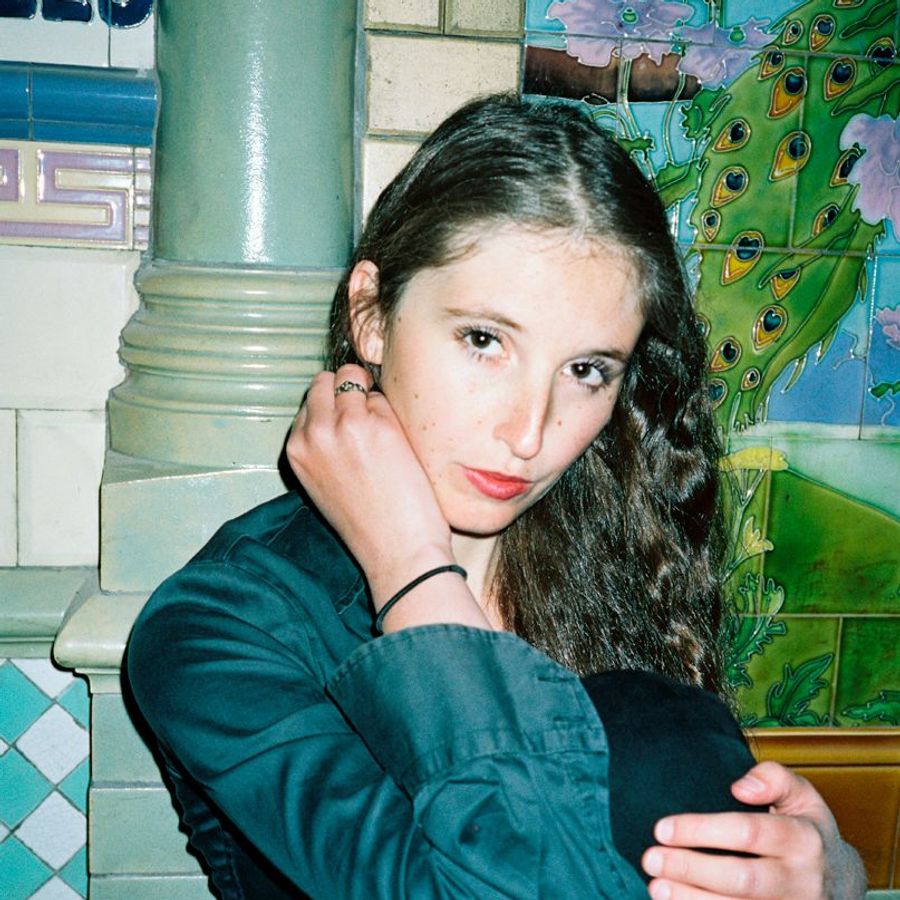
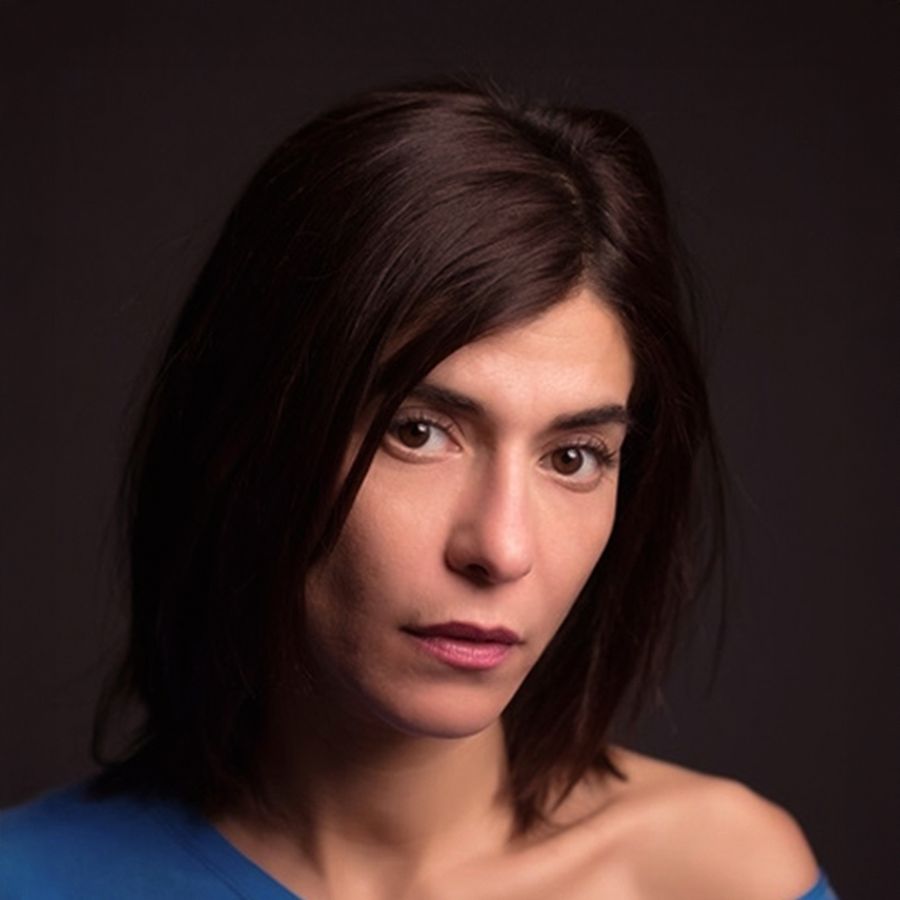
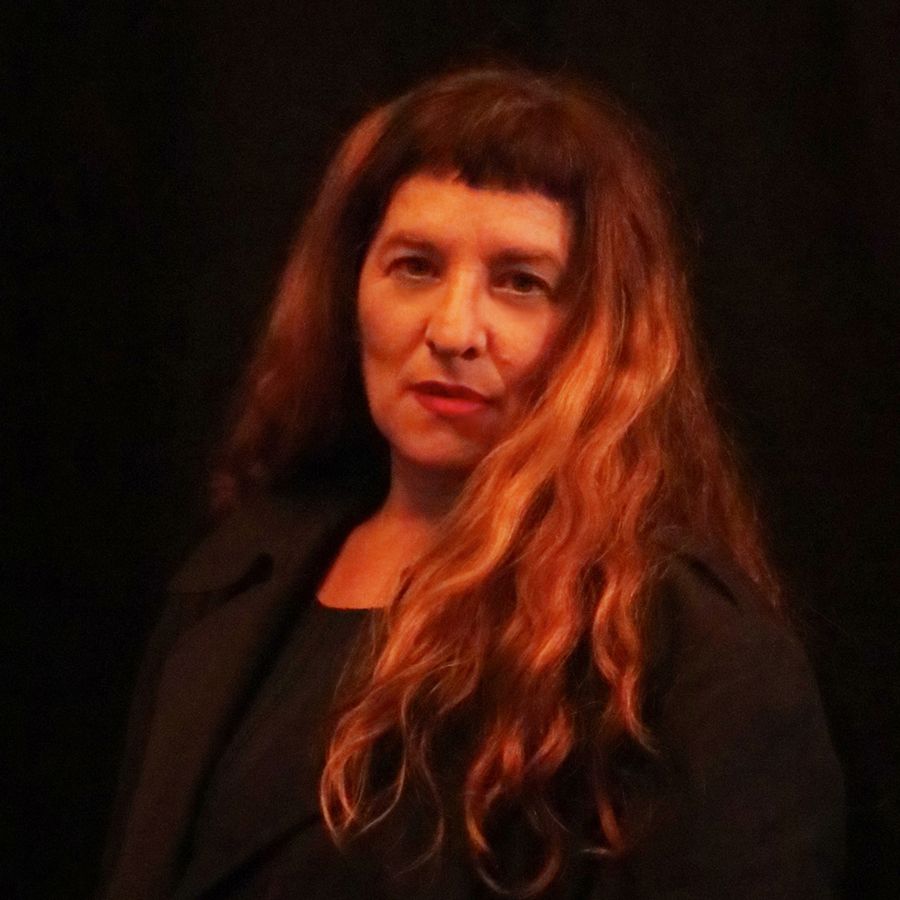
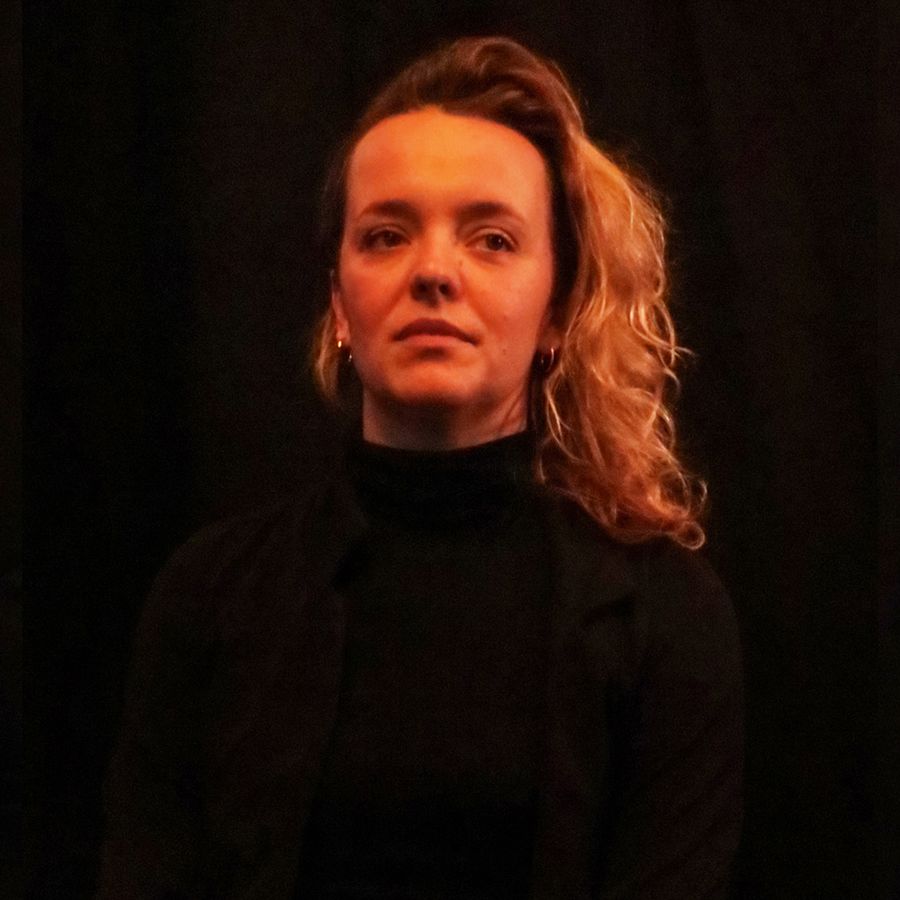
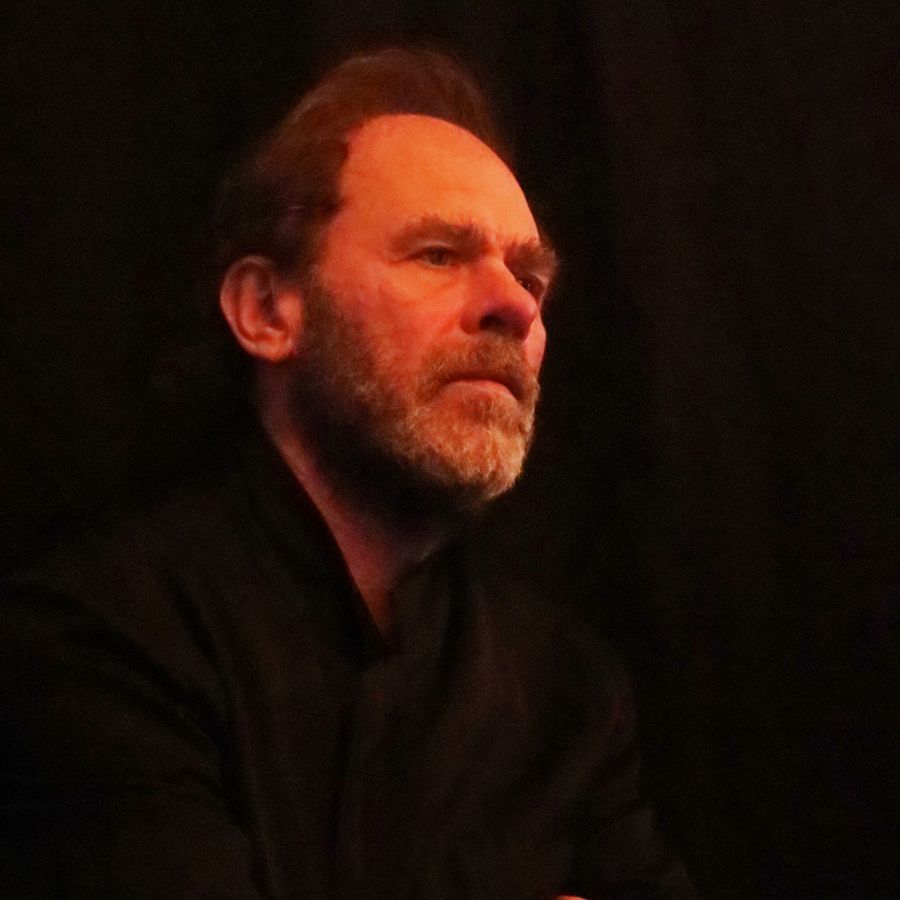
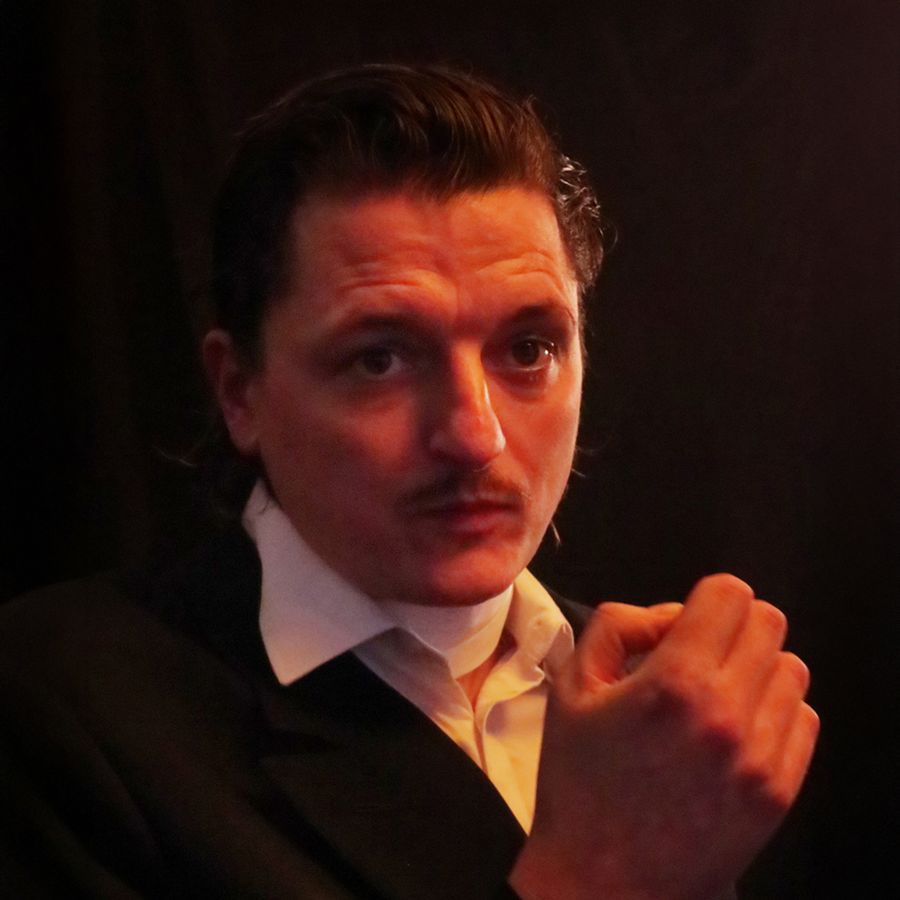
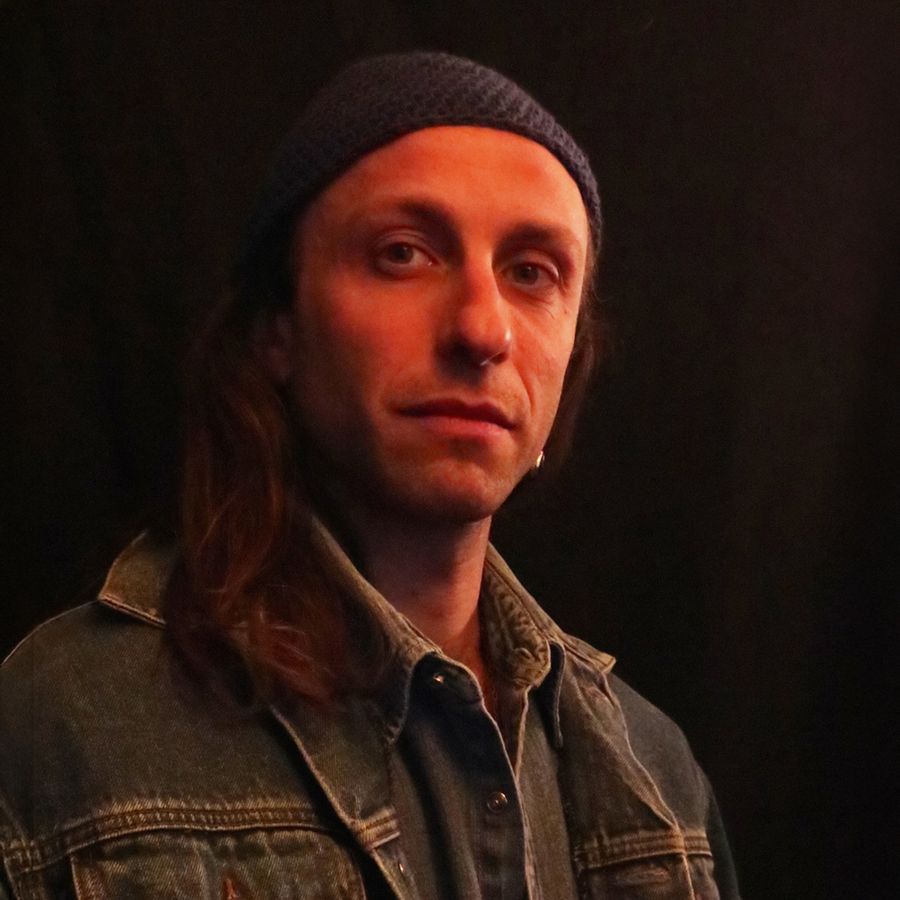
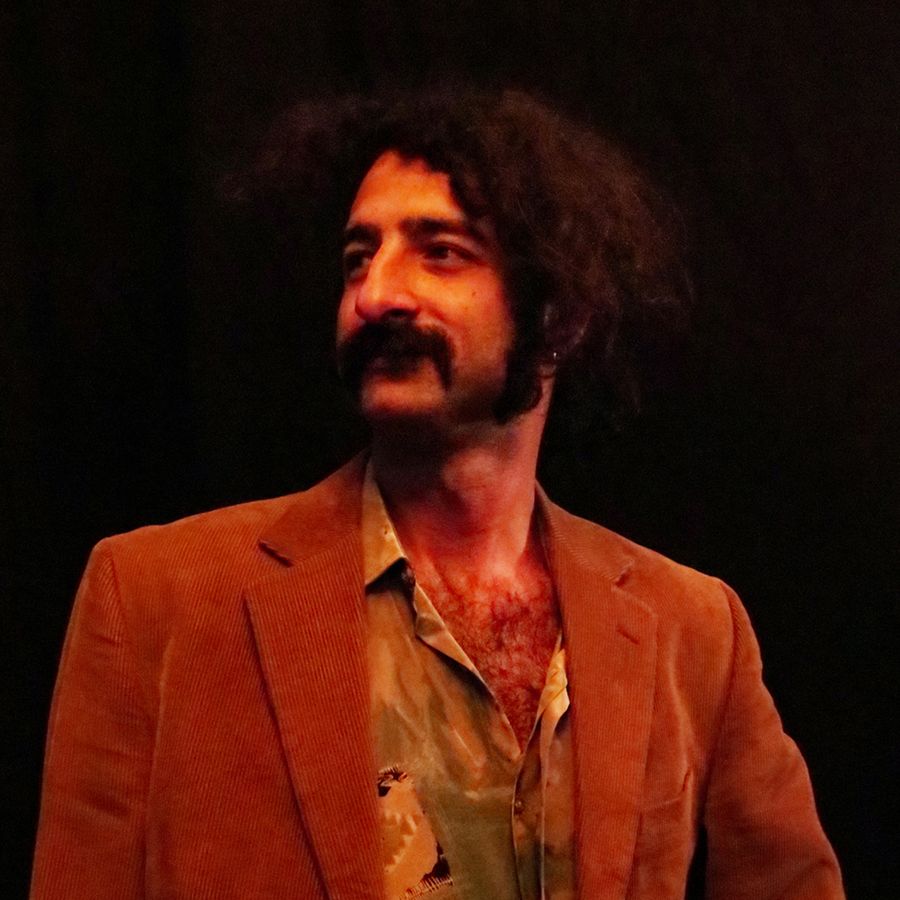
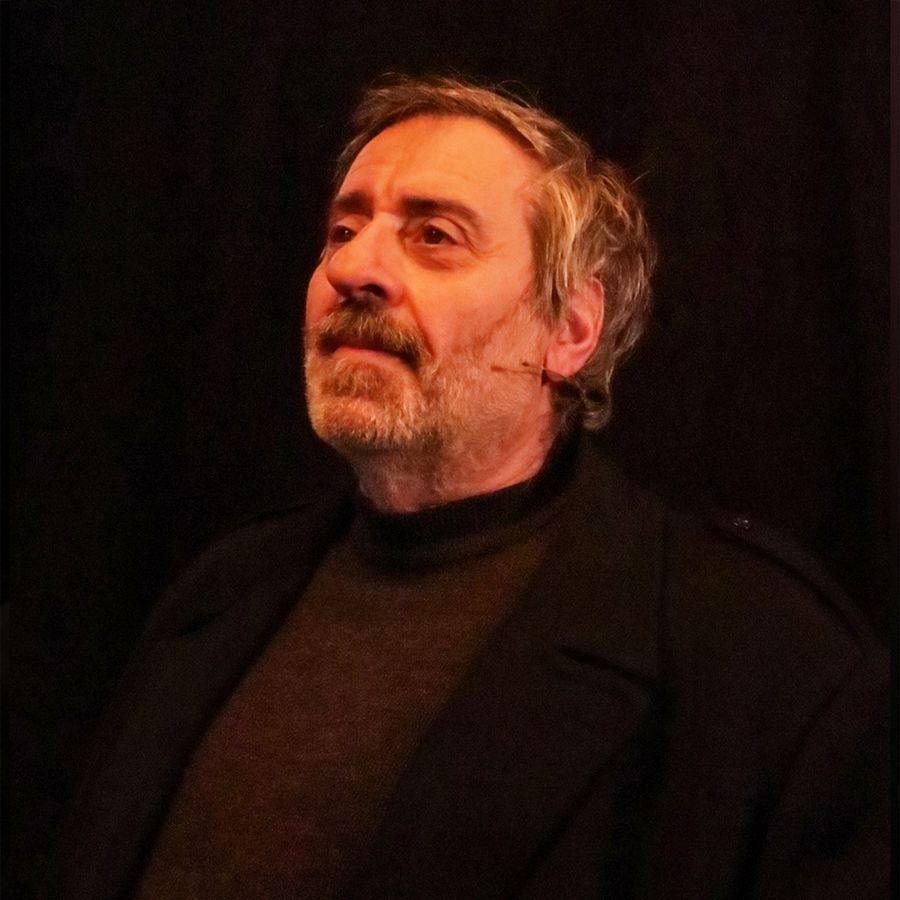
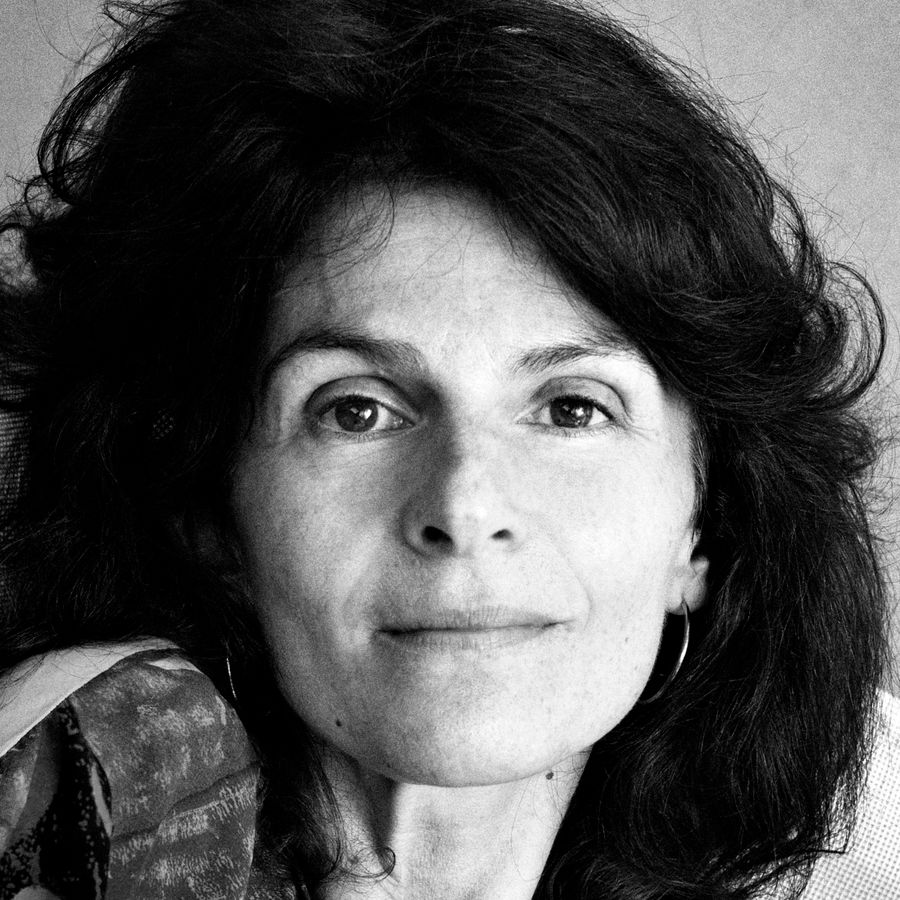
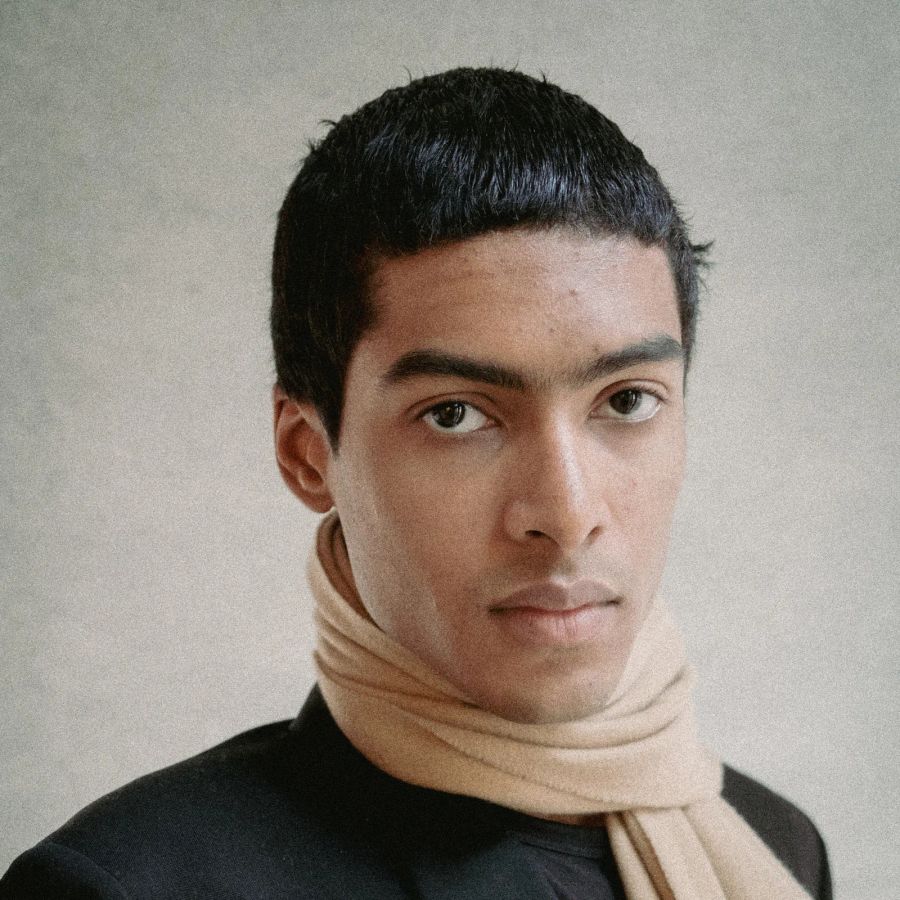
Visual Material

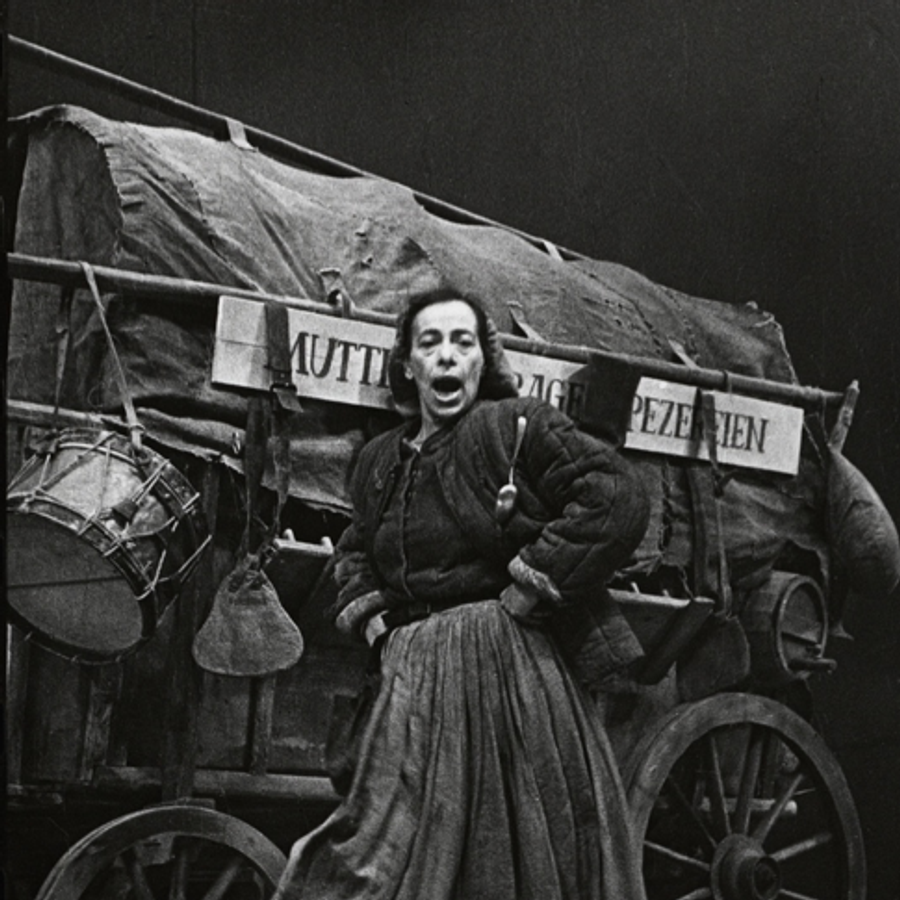
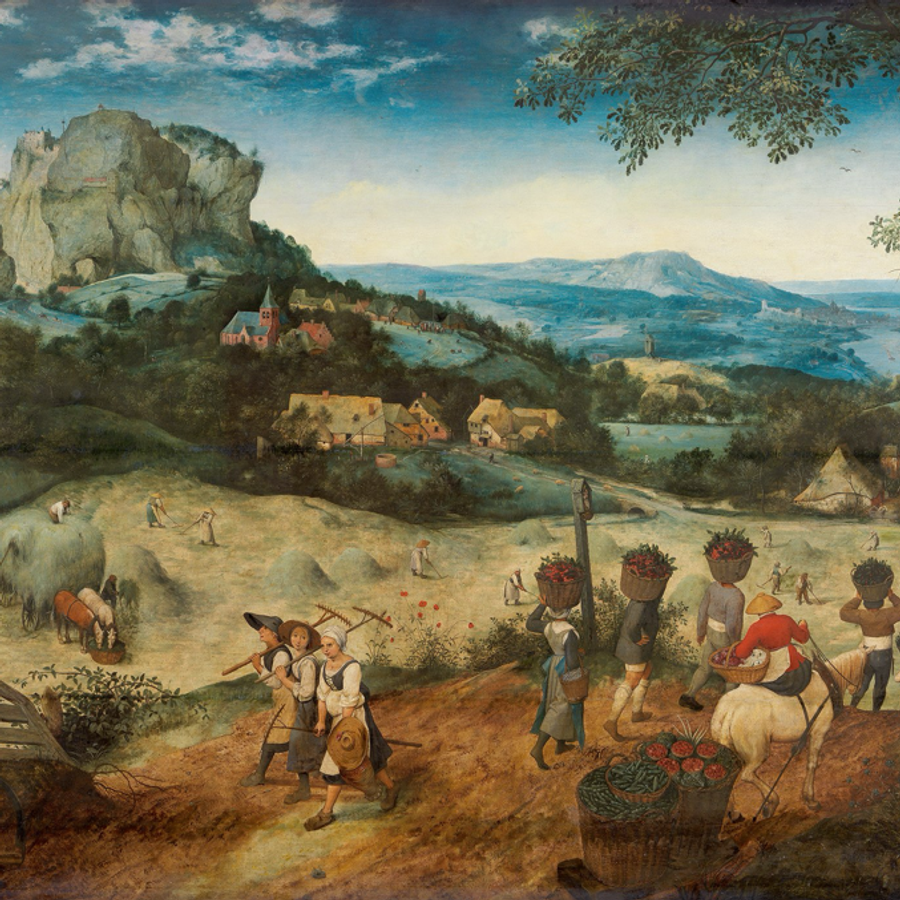
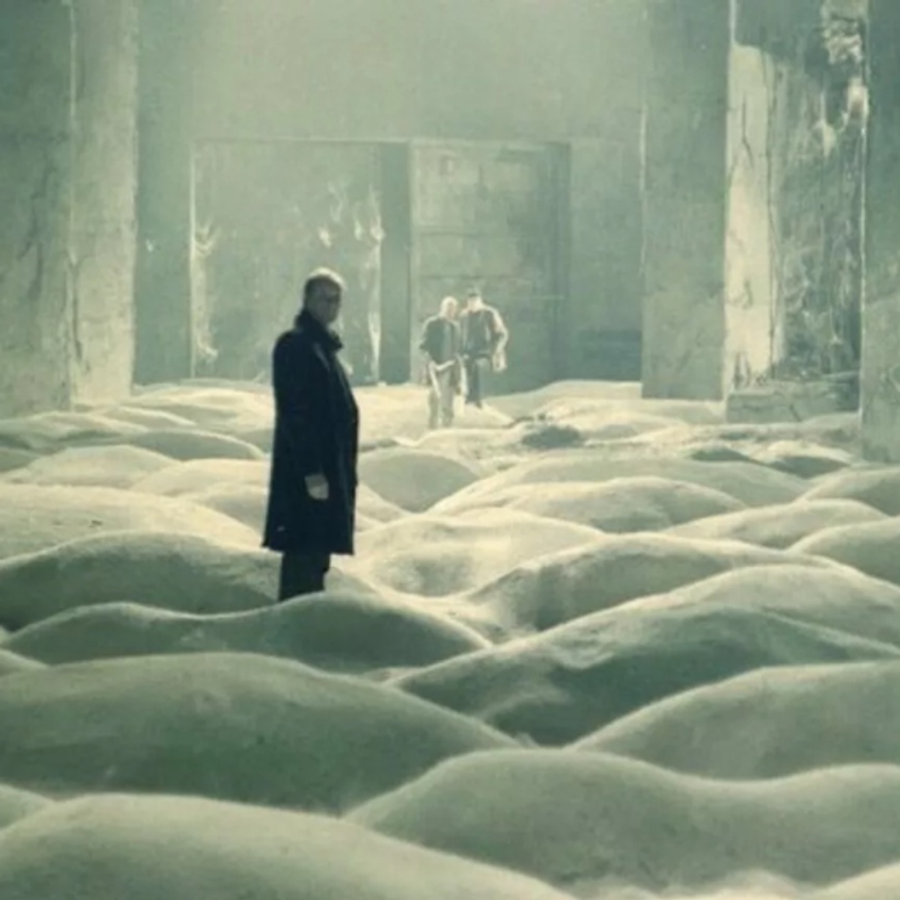
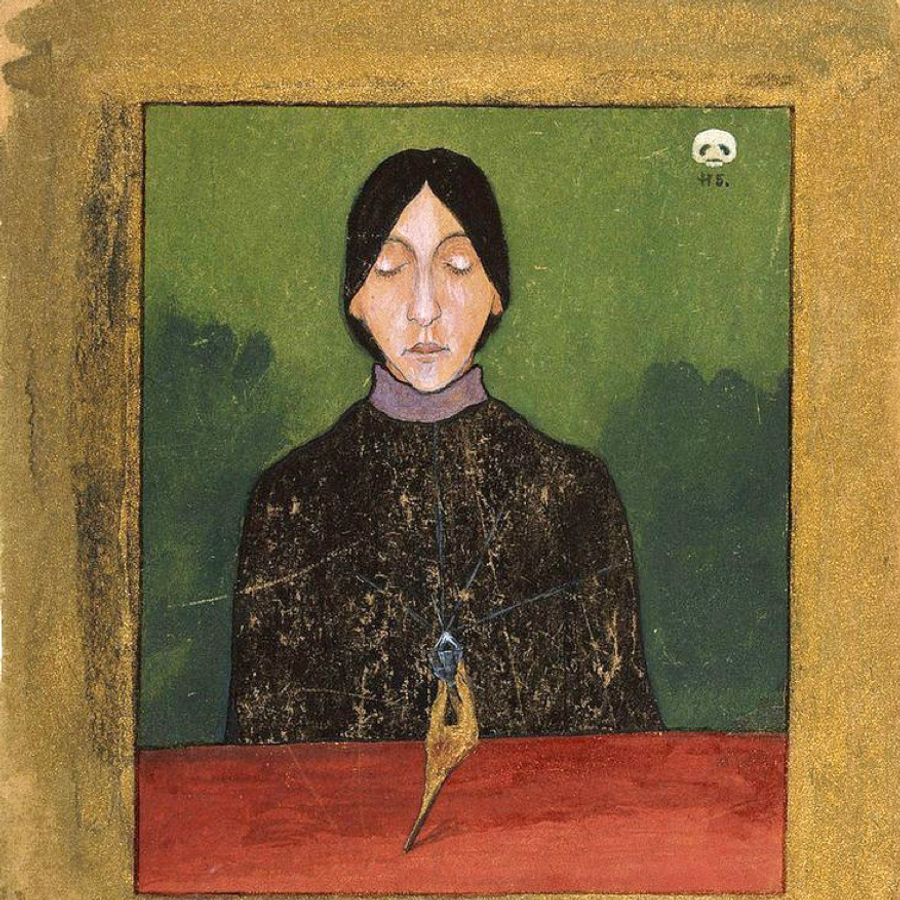
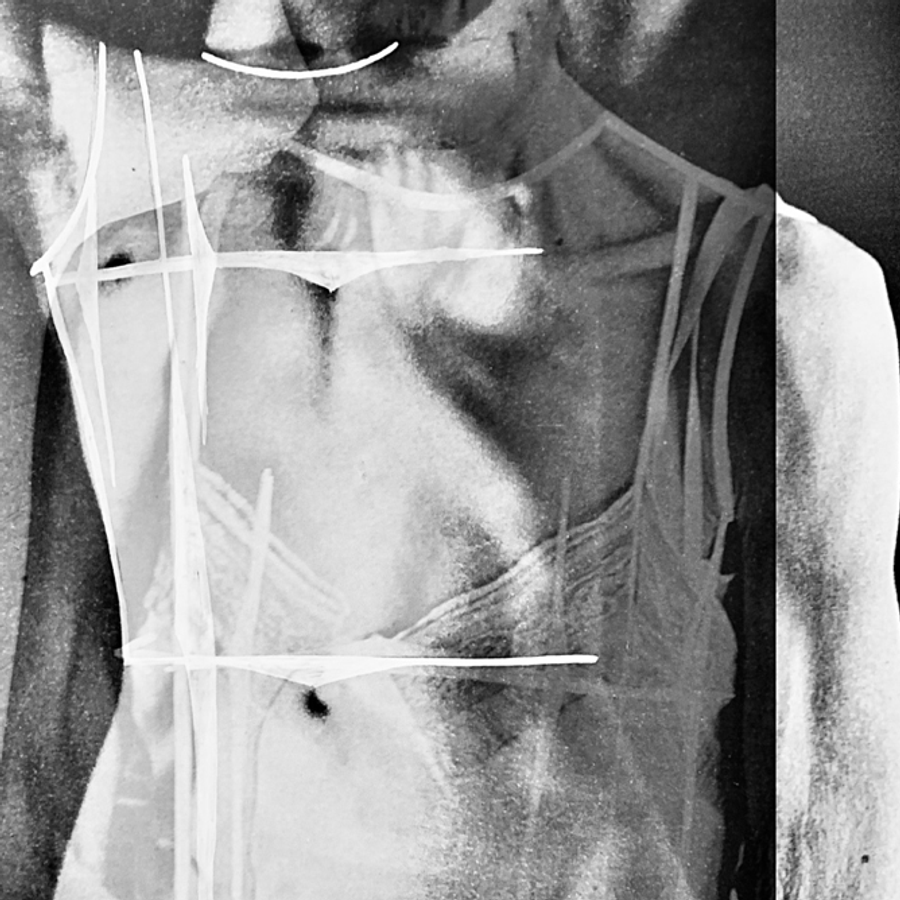
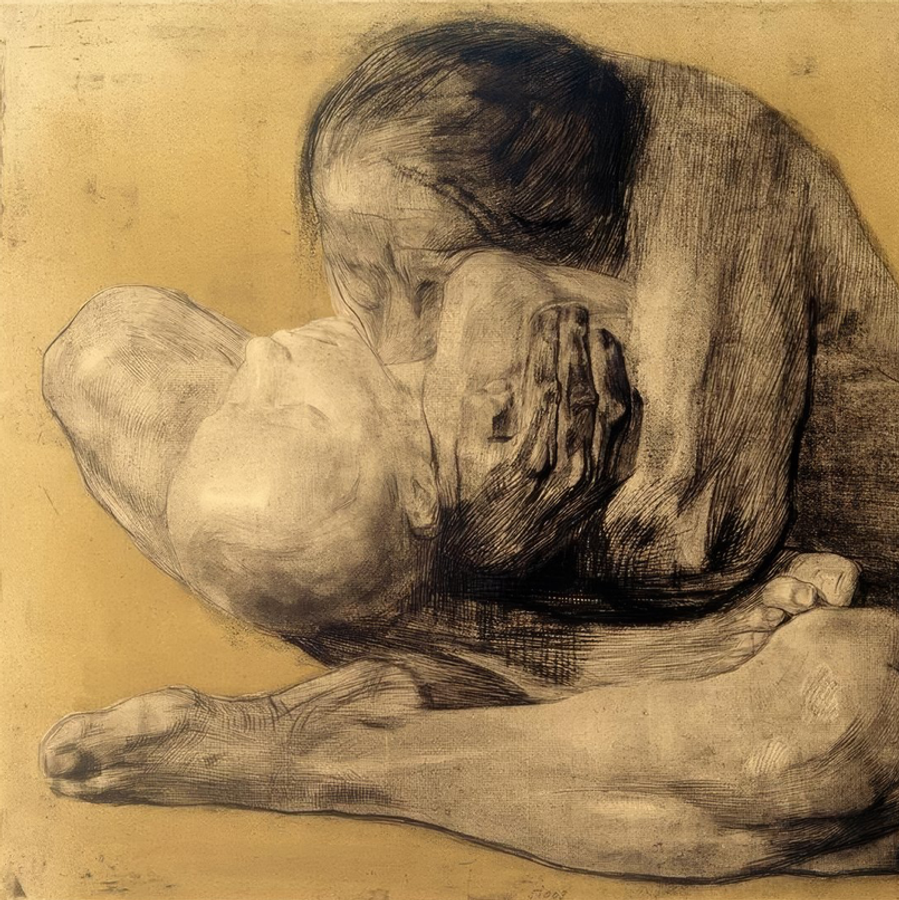
Credits
text BERTOLT BRECHT original title Mother Courage and her children direction LISABOA HOUBRECHTS dramaturgy DINA DOOREMAN, ERWIN JANS actors LUBNA AZABAL, KOEN DE SUTTER, JOERI HAPPEL, AYDIN ÌşLEYEN, ALAIN FRANCO, LAURA DE GEEST, LISI ESTARAS, PIETRO QUADRINO original music PAUL DESSAU music arrangement, additional music & sound design Alain Franco performance music ALAIN FRANCO & AYDIN ÌşLEYEN vocals and saz AYDIN ÌşLEYEN The following songs from Paul Dessau from Mother Courage and her children will be sung without musical guidance MON CAPITAINE – CHANSON DE MÈRE COURAGE, LA CHANSON DE LA GRANDE CAPITULATION, LA CHANSON DE LA FRATERNISATION ET DE ULM À METZ costumes OUMAR DICKO light design FABIANA PICCIOLI set design LISABOA HOUBRECHTS & RALF NONN production manager ELLA DE GREGORIIS stage master CARLO BOURGUIGNON |lichttechniek | technique d'éclairage | light technics MARGARETA ANDERSEN sound technics BRECHT BEUSELINCK SURTITLING INGE FLORE TRANSLATION en Français: Irène Bonnaud (Bertolt Brecht est publié et représenté par L’ARCHE – éditeur & agence théâtrale. www.arche-editeur.com), in het Nederlands: Gerrit Kouwenaar. Hebrew : Amit Lebleng. Kurdish : Aynur Bozkurt intern assistant direction DAAN HAEVERANS & LUDWIG SANDER production KVS & TONEELHUIS coproduction THÉÂTRE DE LIÈGE, LE PHÉNIX-SCÈNE NATIONALE DE VALENCIENNES, THÉÂTRE DE LA VILLE PARIS, PERPODIUM with the support THE TAXSHELTER OF THE BELGIAN FEDERAL GOVERNMENT VIA CRONOS INVEST, THE FLEMISH COMMUNITY & REGIO HAUTS-DE-FRANCE




